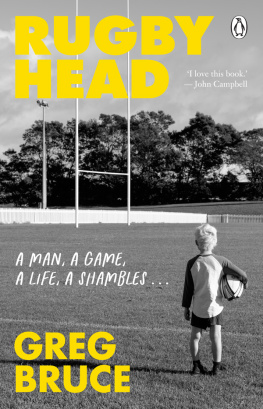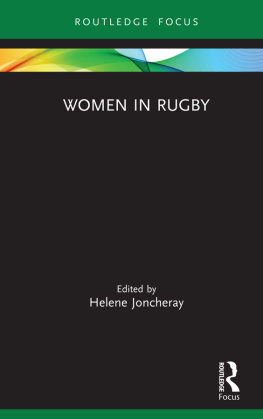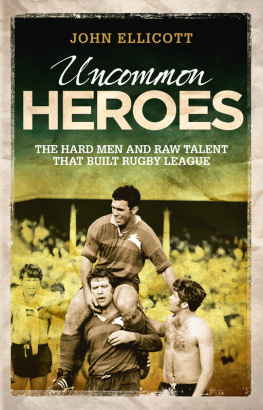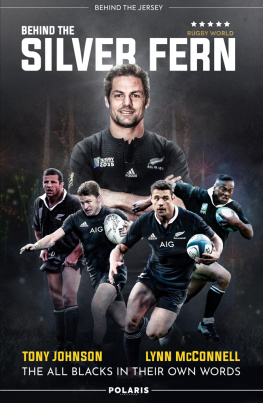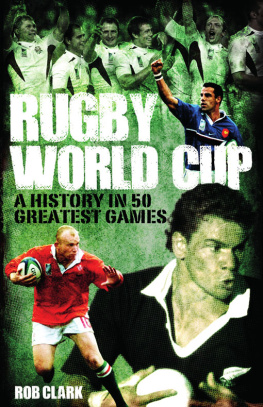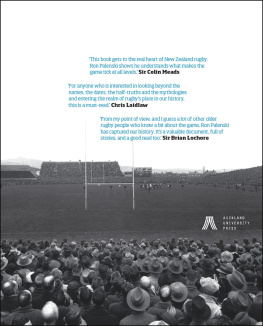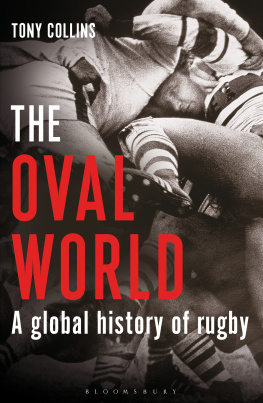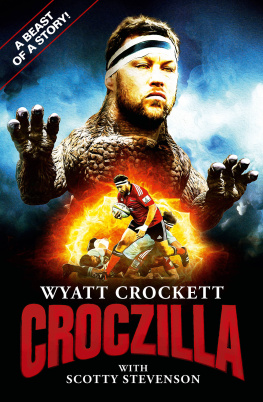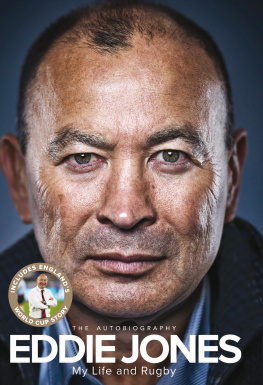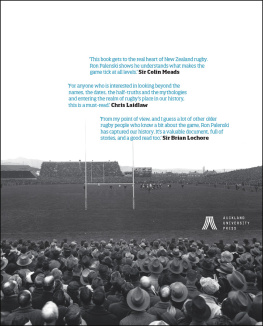RUGBYS GREATEST
Characters
Colourful tales of fantastic fullbacks, inspirational leaders and jokers in the pack
JOHN GRIFFITHS

First published in 2009 by
JR Books Ltd, an imprint of
Aurum Press Ltd, 7477 White Lion Street, London N1 9PF
www.aurumpress.co.uk
This e-book edition first published in 2014
Copyright 2009 John Griffiths
Michael Munn has asserted his right to be identified as the Author of this Work in accordance with the Copyright, Designs and Patents Act 1988.
All rights reserved.
This e-book is copyright material and must not be copied, reproduced, transferred, distributed, leased, licensed or publicly performed or used in any way except as specifically permitted in writing by the publishers, as allowed under the terms and conditions under which it was purchased or as strictly permitted by applicable copyright law. Any unauthorised distribution or use of this text may be a direct infringement of the authors and publishers rights, and those responsible may be liable in law accordingly
Digital edition: 978-1-78131-400-5
Softcover edition: 978-1-90677-915-3
CONTENTS
INTRODUCTION
F or its first 125 years as an international sport dating from 1871, rugby union was an amateur game that proudly upheld the ethos handed down by its founding fathers in the Victorian Age. Gradually the sport became one of the worlds most popular outdoor team games, yet even when it launched its own World Cup in 1987 it remained strictly amateur. Players came from all walks of life to participate in a game they loved and from which they never expected to reap material reward. It meant that teams comprised players whose livings were made working with their hands, or their wits or their brains, or sometimes all three. Yet the camaraderie engendered by the sport set it apart from others where players at the top level were professionals, men brought together by a common desire to be paid for parading their sporting skills at the highest level.
It was arguably the great freemasonry of rugby union that gave the game its character and greatest characters. This book sets out the backgrounds and stories surrounding some of the larger-than-life personalities who have graced the game, characters who have stood out not necessarily for their deeds as players but for their heart, their courage or their ability to make those around them enjoy the game for what it was always intended to be: one for gentlemen from all classes of life, but especially for those who enjoyed their rugby even more when there was a laugh attached to it.
Different people would choose different characters among their leading five dozen or so, but few could argue that this collection lacks variety. Wavell Wakefield and Alex Obolensky, a baron and a prince, were outstanding personalities in English rugby between the wars whose names are still celebrated today at Twickenham Stadium. And from the other end of the spectrum came the groundsmans son, Billy Bancroft, rugbys first fabulous fullback, whose dedication to practice and supreme self-confidence were essential components in early Welsh successes on the rugby grounds of the late 19th century. Then there were the jokers in the pack. Men like Peter Robbins, whose love of practical tricks terrorised victims and endeared him to a generation of English forwards in the 1950s and 1960s; Clem Thomas, the wholesale butcher from Wales who was accused by opponents of practising his profession on the field; and Gareth Chilcott, who was later engaged to tread the boards in Christmas pantomime owing to his reputation as one of rugbys funniest men.
Inspirational leaders are also represented. Dave Gallaher is still remembered and revered in New Zealand for the pioneering course he and his original All Blacks steered through Britain, Ireland and France in 1905. And in Wales Clive Rowlands, the captain and coach of several Welsh Triple Crown sides, is renowned for appealing to the emotions of his troops with outpourings of rhetoric that would have stirred David Lloyd George.
Although those included in this selection were not chosen for the excellence of their rugby readers will search in vain for the Jonny Wilkinsons, Daniel Carters or Will Carlings several were undoubtedly outstanding rugby players and pure box-office. David Campese, the brilliant wizard of Oz, would be a contender for any All-time World XV to meet Mars, yet it was his teasing of English rugby and his general outspokenness about teams that were reluctant to entertain that sharply defined his character, prompting even his own team coach to declare that Campo had a wire loose somewhere between his brain and his mouth. Jonah Lomu would no doubt partner Campo as the other wing in an all-star XV. He really was larger than life. Did any man do more to advertise rugbys wonderful capacity to entertain than Jonah when he first hit the headlines at the 1995 World Cup? Probably not.
There have been plenty of cheeky chappies who have graced the game, too. Back at the dawn of the 20th century, when Welsh rugby was sweeping all before them, a brilliant little schoolmaster from Cardiff named Percy Bush was the outside-half who made even the All Blacks fear to tread when they came to Wales in 1905. He somehow managed to trade his rugby fame off against his teaching duties, missing 50 per cent of term-time for one reason or another while turning out regularly for Cardiff and helping Wales. He was as much a will-o-the-wisp to the Cardiff Schools Management Committee as he was to opponents on the rugby field.
Fast forward 60 years and another young Welsh fly-half made his debut as a student teacher. Barry Johns initial meeting with Gareth Edwards, who was to be his halfback partner in many famous wins, showed the laconic side to the great man. Edwards, bubbly and keen in contrast to the confident and laid-back John, wanted to get the calls right and pestered Barry into an out-of-hours practice before a big trial match. Having got up early, Barry soon tired of his partners constant questioning. Look Gareth, you just throw em and Ill catch em, he said, and with that he walked out on the practice and so began one of the most famous partnerships in rugby history.
And who but the cheeky Austin Healey of more recent vintage would get up to intercept the morning post and conceal a flatmates Lions tour invitation, as he did to poor unsuspecting Will Greenwood on the morning of the announcement of the 1997 Lions squad to tour South Africa? As Greenwood said, With friends like Austin, who needs enemies? Who says that the modern game doesnt throw up characters?
For the material included in this book, thanks go to the rugby union writers and journalists who down the years have carefully recorded the comings and goings, the antics and tricks of the sports characters. The game has always been lucky enough to enjoy a media that has overwhelmingly had the love of rugby at its heart. Even in todays hard-nosed era of investigative journalism the critics continue to promote the game by emphasising the positives and refer to the negative aspects only when the very wellbeing of rugby, its players or followers is threatened.
Special thanks are due to old friends Tim Auty, Tony Lewis, Geoff Miller, Willow Murray and Dave Richards, of Rugby Relics in Neath, for their practical support unearthing cuttings and references regarding some of the older characters covered. Compiling this book has been a labour of love and final mentions should go to Jeremy Robson, for his encouragement for the project and enthusiasm in commissioning this selection, and to Lesley Wilson at JR Books for her calmness managing the project.


